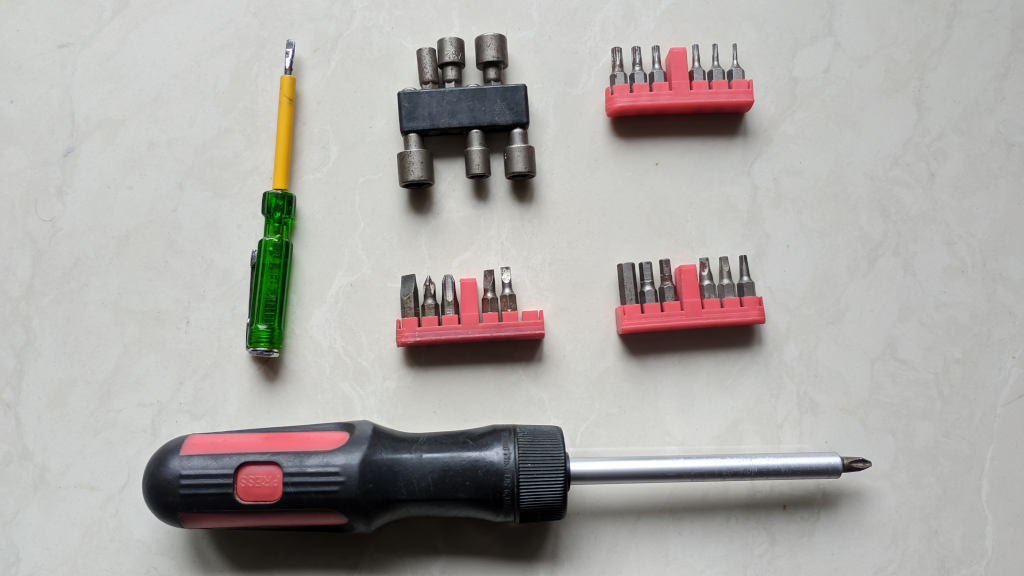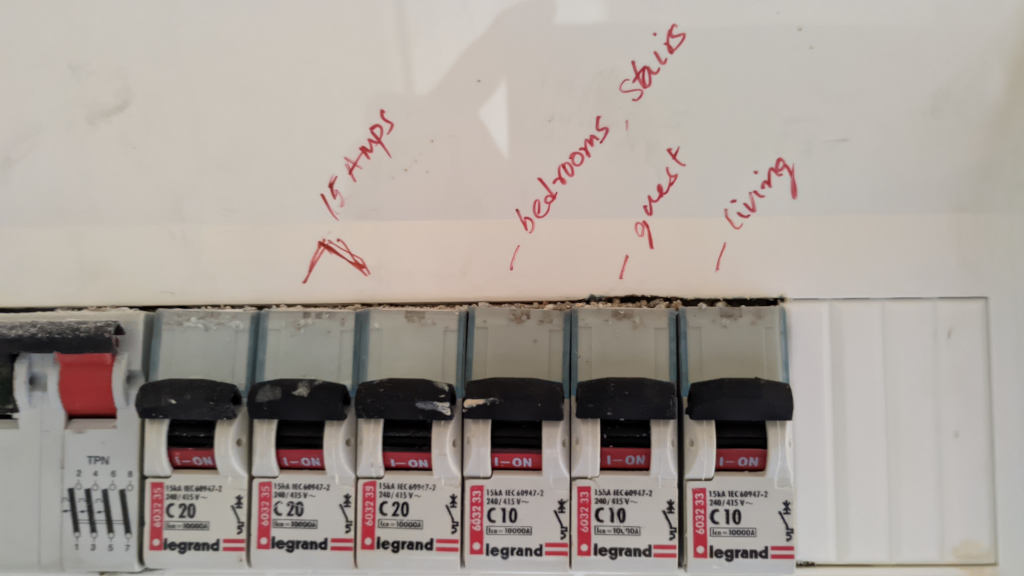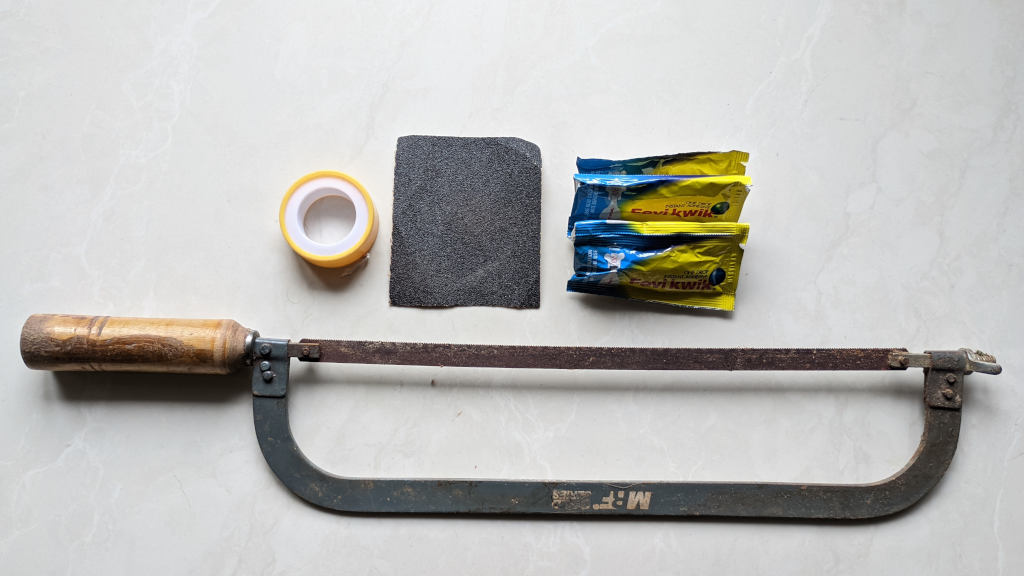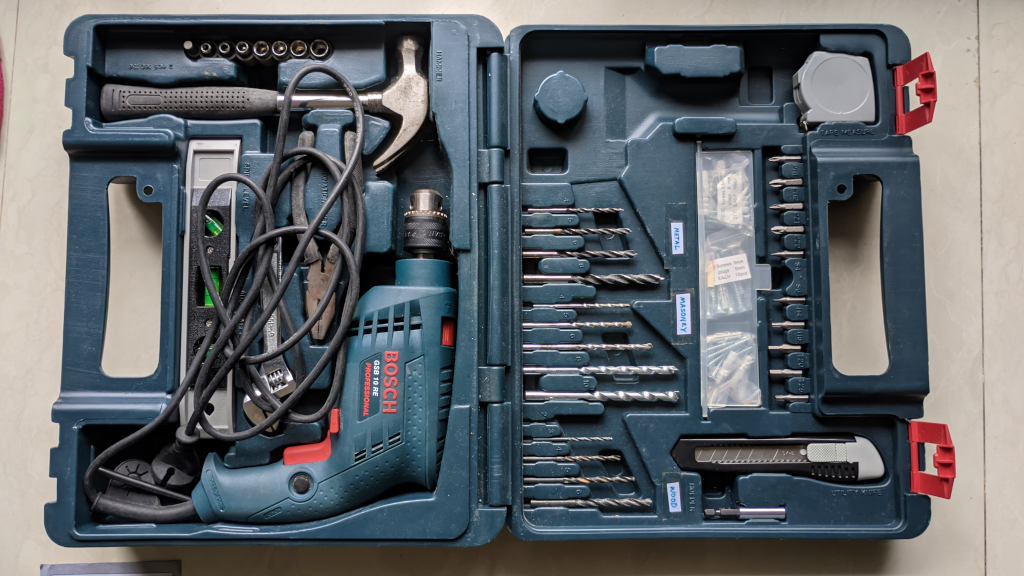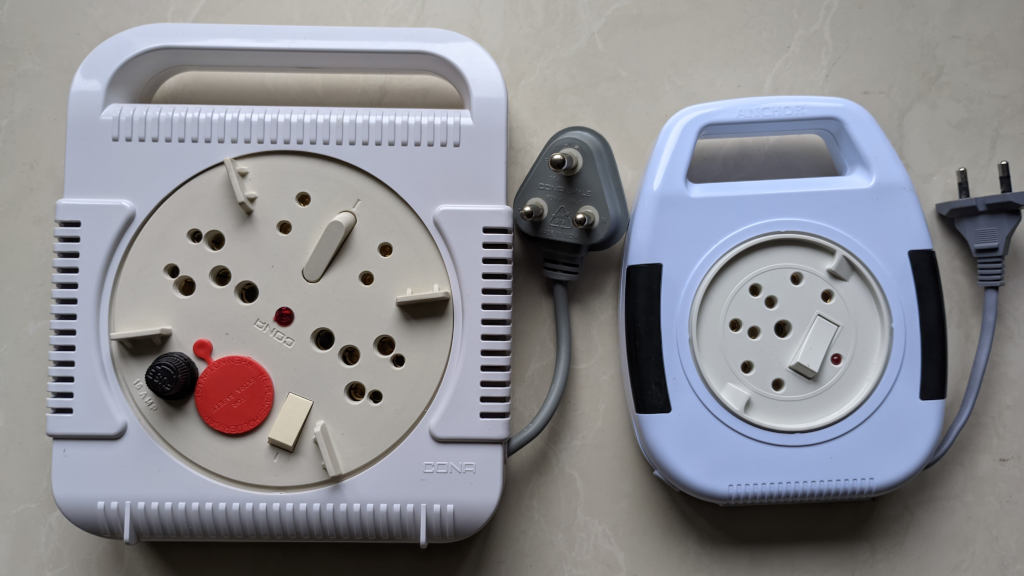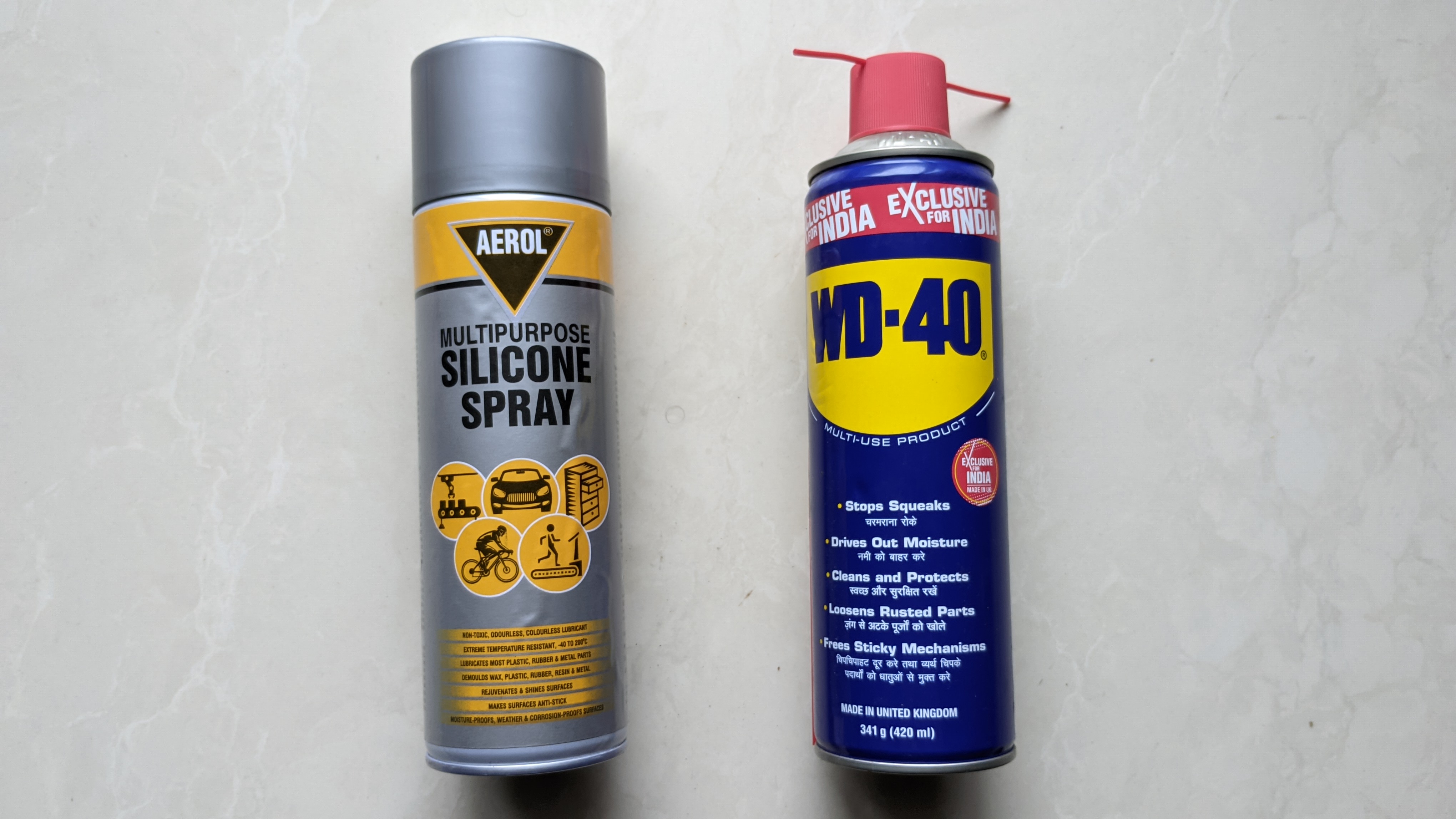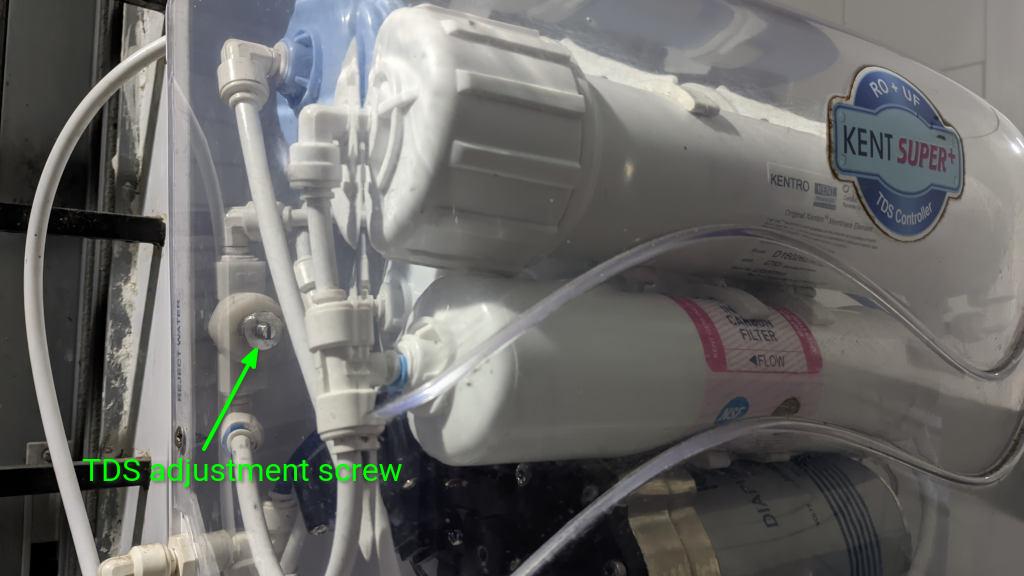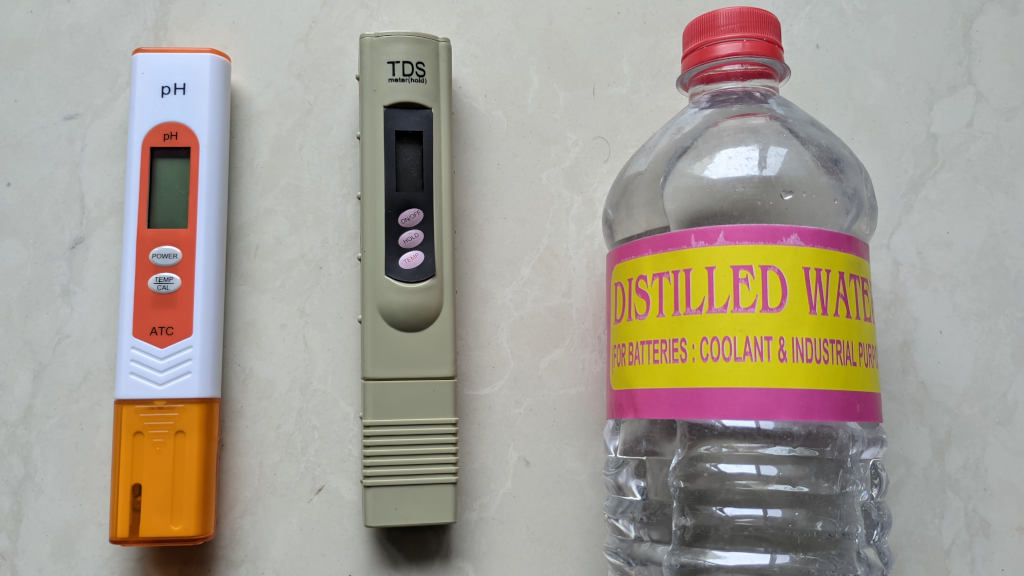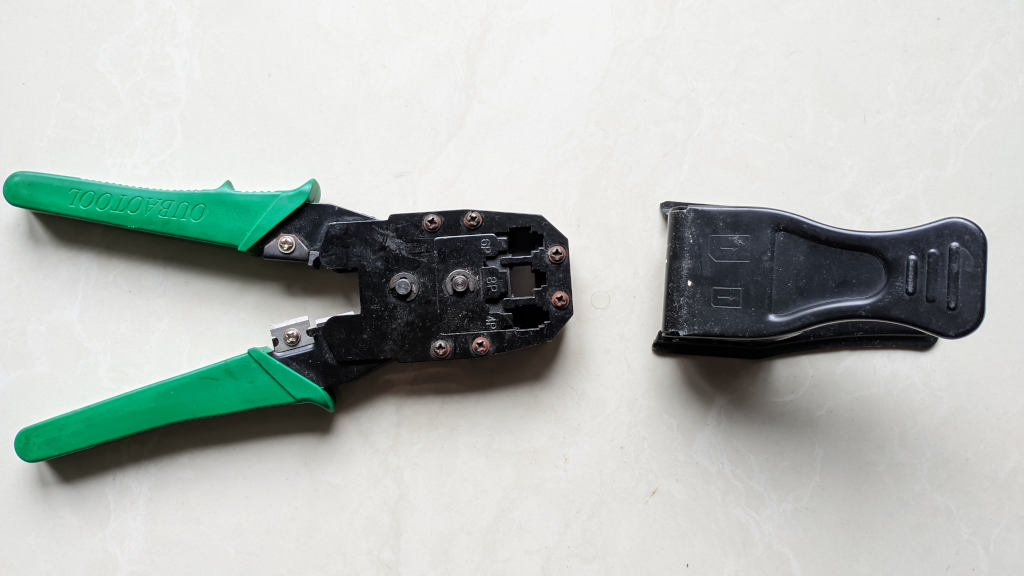Tools I Use To Repair Stuff
A few posts ago, I started writing about the tools I use to repair various things at home based on a request from a reader of my blog. Here is a continuation of that series. I already covered what tools I use to repair and build electronics. In this post I want to cover the tools I used to repair some mechanical items such as cycle or washing machine etc. I won’t go into too much detail explaining every tool that I have. I just want to show you what I have to do some basic repairs. I still feel like I don’t have enough tools, so this is not a comprehensive set that you need. These are somethings that worked for me and perhaps will work for you too.
As you can imagine, the very basic tool that every one pretty much needs all the time is a good screwdriver set. I bought this when I was in the US and the quality is really good. These are made of good shock resistant steel, so they lasted a long time without breaking or chipping even when I used a lot of torque on the bits. The bits include flat head, philips, torx, hex and a few other shapes for which I don’t know the name, but have used them :). Normally just this tool does the trick to repair most including my kid’s cycle, opening TV, microwave, water filter, washing machine, music system etc.
In the picture above, the top left screwdriver looking thing is actually a mains tester. I use it when I am doing home automation projects where I pull out 220 V wires from switch board to connect relays. While I marked all my MCBs properly and turn off an MCB before working on 220V line, the mains tester confirms that there is no electricity. I have had a few 220V electric shocks and they are nasty.
There are times when the basic screwdriver can’t do the job and that is when you call in the big guns. I have a set of wrenches (spanners) along with an adjustable wrench. These did the trick when I have to open some nuts in cycle or scooter, or when doing some plumbing work like unscrewing taps or pipes etc.
While we are on the topic of plumbing, a few more tools in my arsenal related to that are plumbers tape, hacksaw, super glue and sand paper. I use these tools even in my electronics or wood projects. For example I use hacksaw when cutting plastic enclosure for my electronics. Or the time we used sand paper to sand down wood when our doors get stuck during rainy season due to expanding wood or sagging doors etc. One picture I don’t have is that of solvent cement. We used that when connecting PVC pipes for our rain water harvesting project and for a leaky pipe. You have to be careful with solvent cement because they produce vapors which can be dangerous to your health and may cause dizziness.
When there is a need for power tools I have the Bosch electric drill toolkit. We used it to drill holes in walls when doing solar panel, rain water harvesting and shade net projects. It can also be used as an electric screwdriver. The water level is used to level solar panel etc.
Don’t forget the extension cords you might need when you have to reach far ends of the house with the drill gun. So I have a couple of extension cords. One is a longer 4m (13 ft) 5 amp extension cord, while the other is a shorter 6 ft, 16 amp one for those occasions when I am doing heavy duty work.
After repairing things, comes maintenance. When it comes time to clean the appliance or vehicle, different size brushes come to the rescue. When cleaning a large surface areas like my UPS battery, I use the wider paint brush. For smaller hard to reach places like cycle wheel axle, the toothbrush does the trick. The rest are for everything in between. There are also a couple of hard bristle brushes to clean mud that is stuck in the car parking tiles or overhead water tank or sump etc.
Another kind of maintenance is to grease the surfaces like cycle chain, or wheels or my gym equipment, skates etc. For those kind of things, I use silicone spray. And to remove rust, clean surfaces and to also to lubricate I use WD 40.
One more maintenance activity that I have is to make sure that our drinking water is of adequate quality. I check the water quality once a month using a TDS meter and a pH meter. In Bangalore where I live, the water hardness is a bit high, so we have a RO water purifier. The purifier reduces the TDS, sometimes to very low number. At one point it was as low as 50 which is fast approaching distilled water level purity. You might know that too low of a TDS is not recommended because it is devoid of all minerals. I am not sure whether that is a risk because some argue that minerals from water are not absorbed by tissue anyway and only absorbed from food. Either way, I keep the TDS to around 150. For this reason I have the TDS meter. When the TDS is too low or high I adjust the screw in our water purifier until it matches what I need. This also has the advantage that it does not reject too much water in the RO process and hence less water is wasted. We are lucky to have a water purifier with adjustable TDS.
Meanwhile mrs. reynd read somewhere that pH of water is also important and it should neutral or slightly alkaline (pH of 6.5 to 8.5). So we got a pH meter too. Our water pH was never beyond the limit, otherwise we have to figure out what to do to fix it. Again, I am not sure how important pH is, and if there is any good research backing this claim, but we try to be on the safe side when it comes to health :).
I top up my UPS lead acid batteries with distilled water. So we buy a full pack of them. I have a recurring monthly calendar reminder to check the battery water level. Whenever the level is too low (happens every 3-6 months), I top them up.
A couple of miscellaneous tools that I probably used 4 or 5 times in their whole existence are a CAT5 Cable Crimping Tool and a SIM cutter. I thought it would be fun to show them. We used the SIM cutter when we had old SIMs which had to be cut to micro SIM size when phones at the time were not supporting regular SIM sizes. For a family with 5 SIMs in total, it seemed like a decent buy. The tool was later useful when nano SIM phones came along. But one or two times, the cut was not good and the SIM had to be replaced. Now it is lying there never to see its use ever :).
Coming to the CAT5 crimper, when our house was being constructed, I instructed the builder to lay LAN (CAT5) cables all around the house. I explained what a LAN cable is and he obediently wired up the house. In case you don’t know, this cable allows fast network traffic. Which means if I have my media center with all my movies, music and photos in one place connected to the LAN cable, another device elsewhere connected to the same cable can receive data at 100 Mbps speed. That speed was pretty high at the time and I needed it so I can stream movies from my living room media center computer to our or parents bedroom. Now that the WiFi speeds have reached 100 Mbps, it is not as useful anymore, but it is still far more reliable than WiFi.
Anyway, while the builder installed the cable, he left the end points naked without installing RJ45 connectors. So I had to buy this tool, a bunch of RJ45 connectors and crimped them to the cable. The tool has never been used since but it lives on. These tools survived our minimalism clean up so far, but one day they might not. That is the end of this post. More tools coming in another post.


